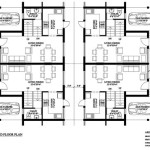Can You Add a Basement to Any House Plan?
Adding a basement to a house offers significant advantages, including increased living space, enhanced property value, and additional storage. However, the feasibility of adding a basement is not universal and depends on several crucial factors relating to the existing structure, site conditions, and local regulations.
Existing house structures pose a primary consideration. Retrofitting a basement under an existing house is a complex and often costly undertaking. It involves temporarily supporting the structure, excavating the soil beneath, and constructing the new foundation and walls. The type of foundation the house rests upon plays a critical role. Houses built on slab foundations present the most significant challenge, as the entire slab must be removed and replaced. Houses with crawl spaces or pier and beam foundations offer more flexibility, but significant modifications are still required. The structural integrity of the house itself must be assessed to ensure it can withstand the stresses of the excavation and construction process.
Site conditions exert considerable influence on the viability of basement addition. The soil type is a key factor. Stable, well-drained soils are ideal. Loose, expansive soils, or those with a high water table, present significant challenges and may require extensive ground improvement measures. The topography of the site also plays a role. Sloped sites can facilitate walk-out basements, but also increase the complexity of excavation and drainage considerations. The presence of bedrock or large boulders can significantly complicate excavation and increase costs. A thorough site investigation, including soil testing and a survey, is crucial before undertaking a basement addition.
Local building codes and regulations govern basement construction and must be adhered to. These regulations often dictate minimum ceiling heights, egress requirements, ventilation standards, and waterproofing measures. Permits are typically required for basement additions, and inspections are conducted throughout the construction process to ensure compliance. Consulting with local building officials early in the planning stages is essential to understand specific requirements and avoid potential delays or costly revisions.
The cost of adding a basement is a significant factor. It is typically considerably more expensive than building a basement during initial construction. The cost varies depending on several factors, including the size of the basement, site conditions, existing foundation type, and local labor rates. A detailed cost estimate should be obtained from qualified contractors before proceeding. Financing options for basement additions are available, and homeowners should explore these options with their financial institutions.
The design of the basement itself is another important consideration. Careful planning is required to maximize functionality and create a comfortable living space. Considerations include ceiling height, natural light, ventilation, and access. Walk-out basements, if feasible, offer the advantage of direct access to the outdoors and increased natural light. Proper insulation and moisture control are essential to prevent dampness and mold growth.
Alternatives to full basement additions exist and may be more suitable depending on the circumstances. These include deepening an existing crawl space, creating a partial basement under a portion of the house, or constructing a separate outbuilding. Each option presents its own set of advantages and disadvantages regarding cost, complexity, and functionality.
The decision to add a basement requires careful evaluation of the existing house, site conditions, local regulations, and budget. A thorough assessment by qualified professionals, including structural engineers, contractors, and building inspectors, is essential. This assessment should include a detailed cost estimate and an evaluation of the potential risks and benefits. Homeowners should carefully weigh all factors before proceeding with a basement addition.
The benefits of a basement addition can be substantial, offering valuable additional living space and increasing property value. However, the complexity and cost of such a project necessitate careful planning and a realistic assessment of the feasibility based on individual circumstances. Understanding the interplay of structural limitations, site conditions, regulatory requirements, and financial implications is crucial for informed decision-making.
Prior to embarking on a basement addition project, homeowners should assemble a team of experienced professionals. This team should include a structural engineer to assess the existing structure and design the new foundation, a qualified contractor with experience in basement construction, and a building inspector to ensure compliance with local codes. Open communication and collaboration among these professionals are essential for a successful project outcome.
The long-term impact on the property should also be considered. While a basement addition can enhance property value, it also alters the landscape and may impact drainage patterns. Proper landscaping and drainage solutions should be incorporated into the project plan to mitigate potential issues. The added living space can significantly improve the functionality and enjoyment of the home, providing areas for recreation, storage, or additional bedrooms.

Can You Add A Basement To An Existing House

Can You Add A Basement To An Existing House

Basement Extension Have You Ever Thought About Adding A Urbanist Architecture Small Company London

Can You Add A Basement To House After It S Built Worst Room

How To Create A Great Living Space For Finished Basement Layout

Can You Add A Basement To An Existing House Reasons Steps

How To Add A Basement Design Sweet Home 3d Blog

Can You Add A Basement To House After It S Built Worst Room

7 Best Basement Design Platforms For 2024 Cedreo

Can You Add A Basement To An Existing House Reasons Steps
Related Posts








